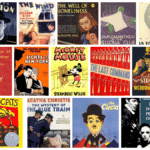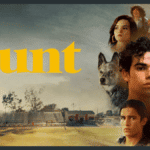A Los Angeles jury needed less than three hours to clear Disney’s Buena Vista unit of copyright infringement—so why did it take five years and millions in legal fees to get there? With another no-access verdict in the books, it’s time for a more efficient approach.
Last week, a Los Angeles jury deliberated for just a little longer than Moana‘s runtime before deciding that Disney’s blockbuster animated film didn’t infringe animator Buck Woodall’s unproduced project, Bucky the Surfer Boy. Woodall claimed that the creators of Moana must have copied his work, pointing to overlapping elements like Polynesian mythology, ocean voyages, shape-shifting demigods, and magical necklaces.
But just like January’s Gregorini v. Apple verdict involving Apple TV+’s Servant, jurors never even reached the question of substantial similarity. Instead, they found no evidence that anyone involved in creating Moana had ever seen Woodall’s materials in the first place. (Read special verdict form here.)

Granted, jurors might be inclined to give plaintiffs the benefit of the doubt on access if they see striking similarities between the works and suspect copying. But here, even attorneys who regularly represent copyright plaintiffs have acknowledged that Woodall’s claims relied more on generic thematic similarities than on any meaningful overlap in original, protectable expression.
All of which raises a broader question: With evidence this weak, should cases like this really be going all the way to trial?
The Moana Trial: What Happened?
As I noted a few weeks ago in my trial preview, the only remaining defendant in Woodall’s case was Buena Vista Home Entertainment—Disney’s home distribution arm. Most of Woodall’s claims were dismissed on statute of limitations grounds at summary judgment, leaving just his allegations related to the post-2017 home video distribution of Moana on DVD and Blu-ray.
Over eight days of testimony, Woodall’s attorneys attempted to link Bucky to Moana through a handful of theories—none of which were particularly plausible, let alone persuasive.
Woodall testified that he had shared his Bucky materials with his brother-in-law’s stepsister, Jenny Marchick, who at the time was an assistant at Mandeville Films. That company had a first-look deal with Disney’s live-action division—not its animation department. Marchick acknowledged meeting with Woodall once as a family favor but firmly denied ever passing Bucky along to anyone at Disney, emphasizing that as an assistant at a separate company, she wasn’t even in a position to do so.
Woodall’s credibility took a further hit on cross-examination when it emerged that, after filing the lawsuit, he had backdated and printed Marchick’s name on a confidentiality agreement to bolster his claims. Both Marchick and Buena Vista’s handwriting expert testified that the signature on the agreement wasn’t hers.

Woodall’s fallback theory—that Pixar sound engineer Doc Kane could have been the access point—didn’t fare any better. Kane had recorded voice-over sessions for The Incredibles in 2003 at a Hawaii sound studio owned by Peter Heckmann, Woodall’s former business partner. Jurors watched Heckmann’s video deposition, in which he claimed to have briefly mentioned Bucky to Kane and The Incredibles director Brad Bird during those sessions—then later pitched it separately to Kane. Kane allegedly liked the project, but Heckmann admitted they never spoke about it again.
Meanwhile, Moana directors John Musker and Ron Clements testified that they had never heard about Bucky from Kane, adding that as a sound engineer, Kane wouldn’t have been pitching story ideas to Disney in any event. The directors also presented extensive documentation of Moana’s development process, including years of research, trips to Polynesia, and a detailed paper trail showing how the film was created.
Given all of this, the jury’s “no access” verdict was hardly surprising.
A Better Approach to Access
As I’ve discussed before, judges in the Central District of California have become increasingly reluctant to dismiss even weak copyright cases on substantial similarity grounds. Much of this hesitation stems from a series of recent Ninth Circuit memorandum dispositions—none of which are published or officially precedential—cautioning courts against deciding substantial similarity without the benefit of discovery and expert testimony. The court in Woodall never directly compared the two works, not even at summary judgment. Instead, Judge Marshall ruled that dueling expert reports were enough to send the case to trial.
Until the Ninth Circuit provides some much-needed clarity and guidance, there’s a more efficient way to handle these cases: courts should prioritize access as a threshold issue early in litigation, before parties engage in costly discovery and expensive expert battles over substantial similarity and independent creation. In addition to pleading stage motions, one effective solution is bifurcation—separating access discovery from the rest of the case and resolving it first on summary judgment. If there’s no non-speculative evidence of access, there’s no reason to burn through millions on expert reports, document dumps, and endless depositions dissecting the creative process.
Some Central District judges have already recognized the benefits of this approach. For example, in Changing World Films v. Parker, the plaintiffs claimed that the film American Skin infringed their unpublished screenplay, A Routine Stop. The plaintiffs initially theorized that the defendants accessed the screenplay through actor Omari Hardwick at a screenplay competition. However, discovery limited to the issue of access produced no admissible evidence that Hardwick had any involvement in the competition or had ever seen the screenplay. The court then granted summary judgment based on a lack of access, ending the lawsuit before costly litigation over substantial similarity, independent creation, or damages became necessary.
Of course, this bifurcated approach won’t fit every situation. In cases where a plaintiff’s work has genuinely been widely disseminated—through major commercial release, significant public exposure, or widespread industry circulation—courts are right to presume access and proceed directly to substantial similarity. But many of the most persistent copyright plaintiffs are “true believers” whose works never saw the light of day and whose claims rest on little more than speculation and tenuous connections.
For those cases, prioritizing access early would save both parties and the courts from years of unnecessary litigation built on conjecture. If a plaintiff can’t clear the access hurdle, nothing else matters. Recognizing this sooner would prevent weak lawsuits from ever making it to trial.
The Bottom Line
The Moana jury verdict—and the similarly decided Gregorini v. Apple—demonstrate that juries have no trouble quickly rejecting copyright claims when plaintiffs can’t produce credible evidence of access.
Yet the fact that these cases went to trial at all shows why a better approach is overdue. Prioritizing access as a threshold issue—whether through pleading motions or bifurcated discovery—would save both the parties and the courts time and money.
Otherwise, the only real winners in these cases will be the lawyers.
As always, I’d love to know what you think. Should courts take a more proactive approach to access? Is it time for the Ninth Circuit to clarify its guidance? Let me know in the comments below or @copyrightlately on social media.
View Fullscreen




